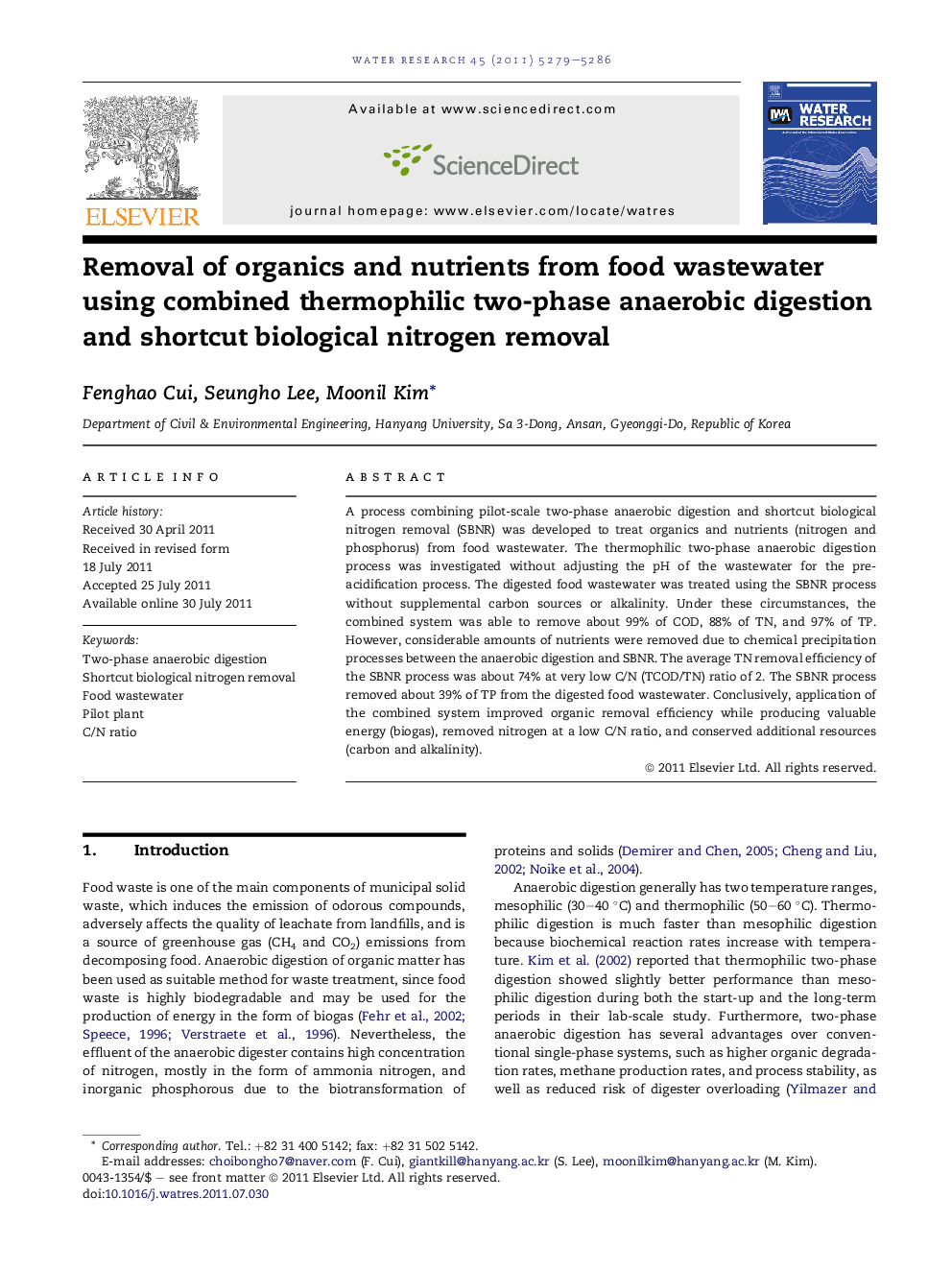| Article ID | Journal | Published Year | Pages | File Type |
|---|---|---|---|---|
| 4483096 | Water Research | 2011 | 8 Pages |
A process combining pilot-scale two-phase anaerobic digestion and shortcut biological nitrogen removal (SBNR) was developed to treat organics and nutrients (nitrogen and phosphorus) from food wastewater. The thermophilic two-phase anaerobic digestion process was investigated without adjusting the pH of the wastewater for the pre-acidification process. The digested food wastewater was treated using the SBNR process without supplemental carbon sources or alkalinity. Under these circumstances, the combined system was able to remove about 99% of COD, 88% of TN, and 97% of TP. However, considerable amounts of nutrients were removed due to chemical precipitation processes between the anaerobic digestion and SBNR. The average TN removal efficiency of the SBNR process was about 74% at very low C/N (TCOD/TN) ratio of 2. The SBNR process removed about 39% of TP from the digested food wastewater. Conclusively, application of the combined system improved organic removal efficiency while producing valuable energy (biogas), removed nitrogen at a low C/N ratio, and conserved additional resources (carbon and alkalinity).
Graphical abstractCombined thermophilic two-phase anaerobic digestion and SBNR process.Figure optionsDownload full-size imageDownload high-quality image (125 K)Download as PowerPoint slideHighlights► We combined thermophilic two-phase anaerobic digestion and the SBNR process. ► 80% of VS was removed by the two-phase anaerobic digestion process. ► 70% of COD was removed further by the SBNR process. ► TN removal efficiency was about 74% when the influent C/N ratio was about 2 in the SBNR process. ► SBNR process eliminates the need for additional carbon sources and alkalinity.
